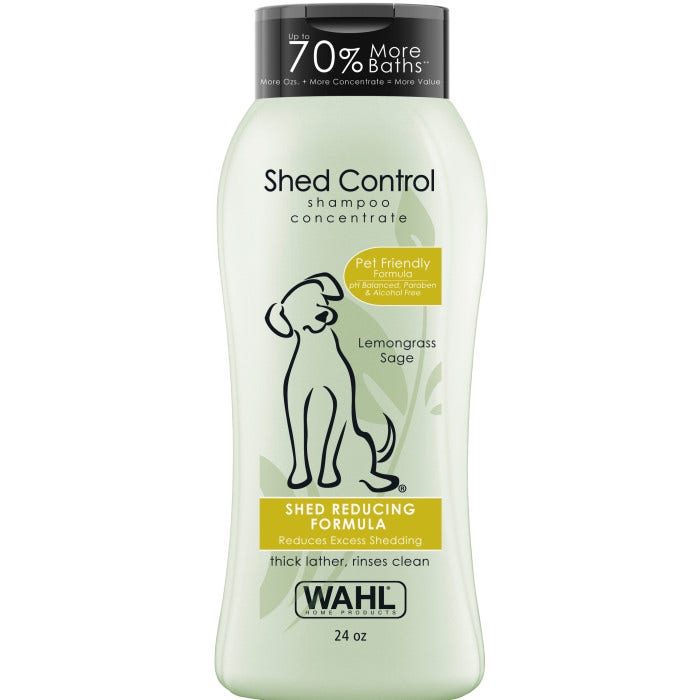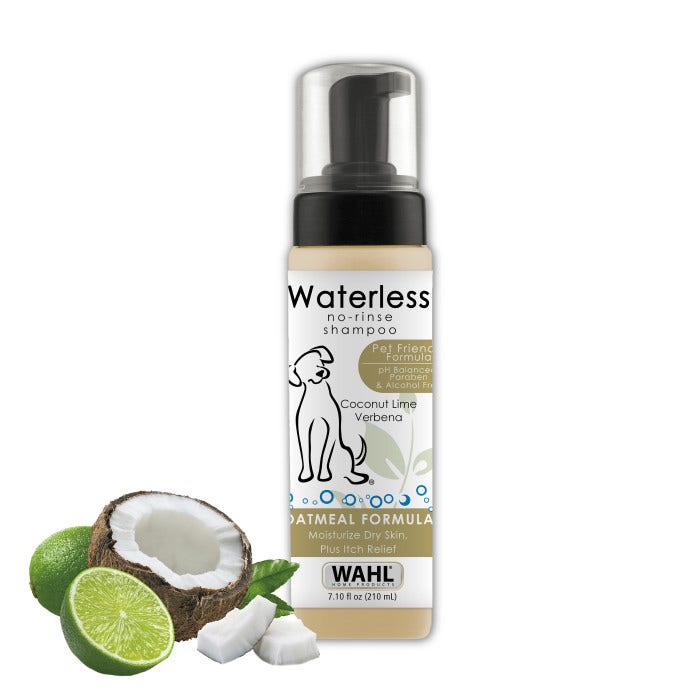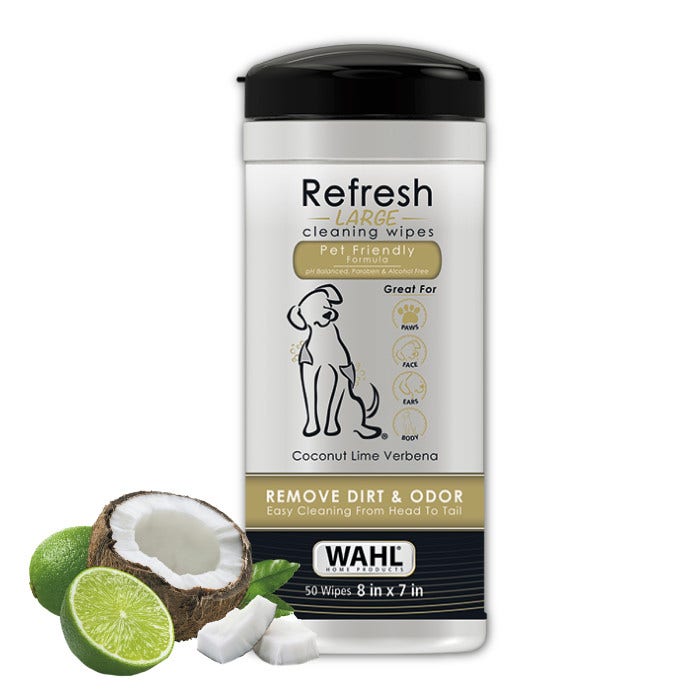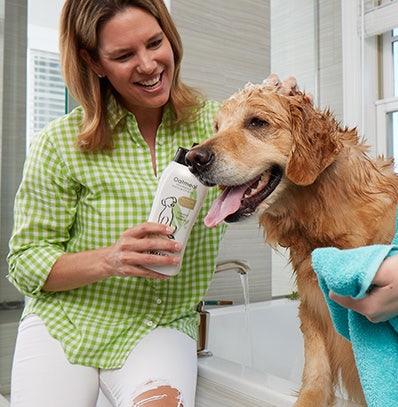
Ultimate Guide on How to Bathe Your Dog
Bath time—that time-honored ritual when we dog owners try to coax our dog into the bathroom for what seems like a battle to get them clean. While some dogs aren’t always willing participants, with a little preparation, patience and positive attitude, bathing can easily become a fun and fulfilling part of the grooming cycle. So, how do you properly bathe your dog? Let’s dive in (pun intended).
Steps to make bath time easy and enjoyable
-
1
Tire them out
Before you even think about turning on that water and wrangling your dog into the bathroom, make it easier on yourself by getting them some exercise just before their bath. Take them for a walk, let them run around the yard or play tug of war (pro tip: let them win, eventually).
-
2
Brush your dog
After play time, give them a thorough brushing. This not only helps to remove dirt and debris, but it frees their coat of excess hair that would otherwise clog or go down your drain. Choosing the right brush depends on your breed of dog, but a good all-around brush for longer haired dogs is the Wahl Pin-Bristle Brush. It features two sides: The pin side removes loose hair while the bristle side collects the loose hair and smooths out the coat, distributing natural oils for a nice shine.
-
3
Prep your space
Now that your dog is nice and calm after their brushing, it’s time to gather your supplies. What do you need to make bath time a success?
- Pet-friendly Shampoo. Make sure the shampoo is designed for dogs and is alcohol and paraben free. Wahl’s 4-in-1 Shampoo is formulated with lavender and chamomile to help calm your dog as you bathe them.
- Towels. Depending on the size of your dog, you may need more than one to dry off your dog after the bath. You’ll also need a few for around the tub because you’re going to need them.
- Low-heat hair dryer. Toweling your dog off after a bath can still leave them damp. A good hair dryer that has a low-heat setting can help thoroughly dry out your dog after a bath.
- Calming music. Some spa-like music can help make the bathing experience relaxing and stress-free for you and your dog.
- Cup. You’ll need a large plastic cup or pitcher for wetting and rinsing your dog.
- Washcloth. For washing your dog’s face and ears.
- Non-slip mat. When dogs get scared, their nails come out and a slippery tub won’t help. Placing a non-slip mat below them can reduce slipping and sliding as you bathe them.
- Bath toys. Nice to have in the tub to create a fun environment—and a good distraction.
- Brush. You’ve already brushed your dog before the bath, but you’ll need to brush after the bath as well to remove any tangles.
- Treats. You’ll want some treats for before, during and after the bath. This will pay dividends in the future, as your dog will associate bath time with a tasty reward.
-
4
Get the water and toys ready
Hot water can scare or even harm your dog, so make sure you get the water temperature just right—warm but not too hot. If you have water-safe toys for your dog, this is the time to use them. Place them in the tub so your dog sees the tub as a fun and inviting place. Toys will also distract your dog during their bath.
-
5
Gently ease them in
One of the most important steps to a successful bath is making your dog feel safe and comfortable as you place them in the tub. Most dogs don’t want to go willingly, so it’s best to ease them in, providing words of encouragement as you do. Make sure to give them pets and tell them they’re a good boy or girl for cooperating so well.
-
6
Wet your dog
Now that you have them in the tub, it’s time to get the bath started. With the water temperature nice and warm, fill your cup or pitcher and gently and slowly pour the water over their body, from neck to tail. If you move too quickly, you’ll startle your dog and make them feel uneasy. Make sure to avoid the face, as you don’t want water in their eyes or ears. And don’t forget their underside and legs.
-
7
Apply shampoo
Squirt a line of shampoo along your dog’s back, but make sure not to apply too much. Wahl’s Dog Shampoos are designed to provide more lather than standard pet shampoos, so a little goes a long way. Use your hands to massage in the shampoo, making sure to move the shampoo to the sides, underside, legs, tail, chest and neck area. Again, avoid the face and ears.
-
8
Brush your dog
Continue to towel dry or use a commercial pet dryer approved for home use. A blow dryer can be substituted for a pet dryer, using a low, warm setting to finish the drying process.
-
9
Rinse thoroughly
Proper rinsing is one of the most important parts of bathing your dog. Shampoo that’s left on your dog can cause dry, itchy skin and dandruff. Fill your cup or pitcher with warm water and gently pour it over their body. Make sure to run your fingers through their fur as you rinse to make sure you’re getting any excess suds hiding within. And don’t forget to rinse their underside, tail, legs and paws.
-
10
Dry them off
After rinsing your dog and running your hands through their fur to remove excess water, it’s time to towel them off. You might want to quickly grab the towel and hold it between you and your dog because they’re about to do their patented shake. Once they do, swaddle them with the towel and massage it around their body. Start with the back and sides and work your way under and around their legs and tail. And don’t forget the paws. If your dog is still damp, use your hair dryer on the lowest heat setting to remove any dampness on their fur.
-
11
Brush again
Grab your brush one more time and give your dog a good once over. This will help smooth out their coat and remove any excess hair or moisture that’s hanging around.
-
12
Give them treats!
Last but not least, treats. Your dog has been cooperative and patient and it’s time to reward them for being so good. This positive reinforcement will make bath time easier the next time, as they associate this activity with something good.
Your Questions About Dog Bathing:
How often should you bathe your dog?
A good rule of thumb is to bathe your dog about once a month. Or, at a minimum, once every three months. That is unless they happened to roll in something they shouldn’t have or decided to give themselves their own bath…in the mud. Then they’ll need extra baths.
Some breeds with longer coats require more frequent bathing, but you can usually tell based on their smell and feel of their coat. Your dog also may need more frequent baths during the spring and fall, when allergens are most present. Our dogs have a way of bringing these allergens into the house, which can affect us humans.
Is bathing your dog necessary?
Yes, not only does bathing your dog remove dirt and debris and keep them clean and smelling good, but it’s an opportunity for you to check their skin for irritations and bumps. Regular bathing can help identify things like fleas, lice and ticks and keeps shedding to a minimum. Regular bathing is also a good time to check their hair for bald spots and mats. Here are 7 things your dog’s coat can tell you about their health.
How do you bathe a dog that hates water?
Dogs want to feel safe, and if it’s a dog’s first bath, it’s going to feel foreign and make them uneasy and anxious. That’s why it’s important to make your dog’s bath-time experience as comfortable and enjoyable as possible, so they associate baths with something good. If your dog has a negative experience with a bath, this will also affect how they see baths. To help them get over this fear, be positive, patient and reward them.
How do you keep your dog calm while bathing?
Most dogs are at their jumpiest when you’re trying to get them into the tub. Once you have them in, it’s important to keep the process moving. Give them pets (and treats) as you wash them and use positive reinforcement and encouragement to make them feel safe. Try placing a non-slip mat under their paws to make them more comfortable, especially if they tend to move around or try to escape during bathing. Another way to help them stay calm during bathing is to create a calm environment. Make sure the temperature of the room is warm and play some spa-like music.
How do you bathe a puppy?
It’s important that your puppy’s first bath-time experience is a good one, so it pays to take the necessary steps to make this first encounter as positive and stress-free as possible. Many of the same steps to bathing a dog apply to bathing your puppy, but there are some differences, including using a puppy-safe pet shampoo. Learn how to properly bathe your puppy by following these guidelines.
What to use
Need help deciding what you need?
Wahl has a full line of pet-grooming products that will let you handle brushing to bathing in the comfort of your own home.
Product SelectorMore Dog Grooming Tips
Calm Your Dog Before Grooming
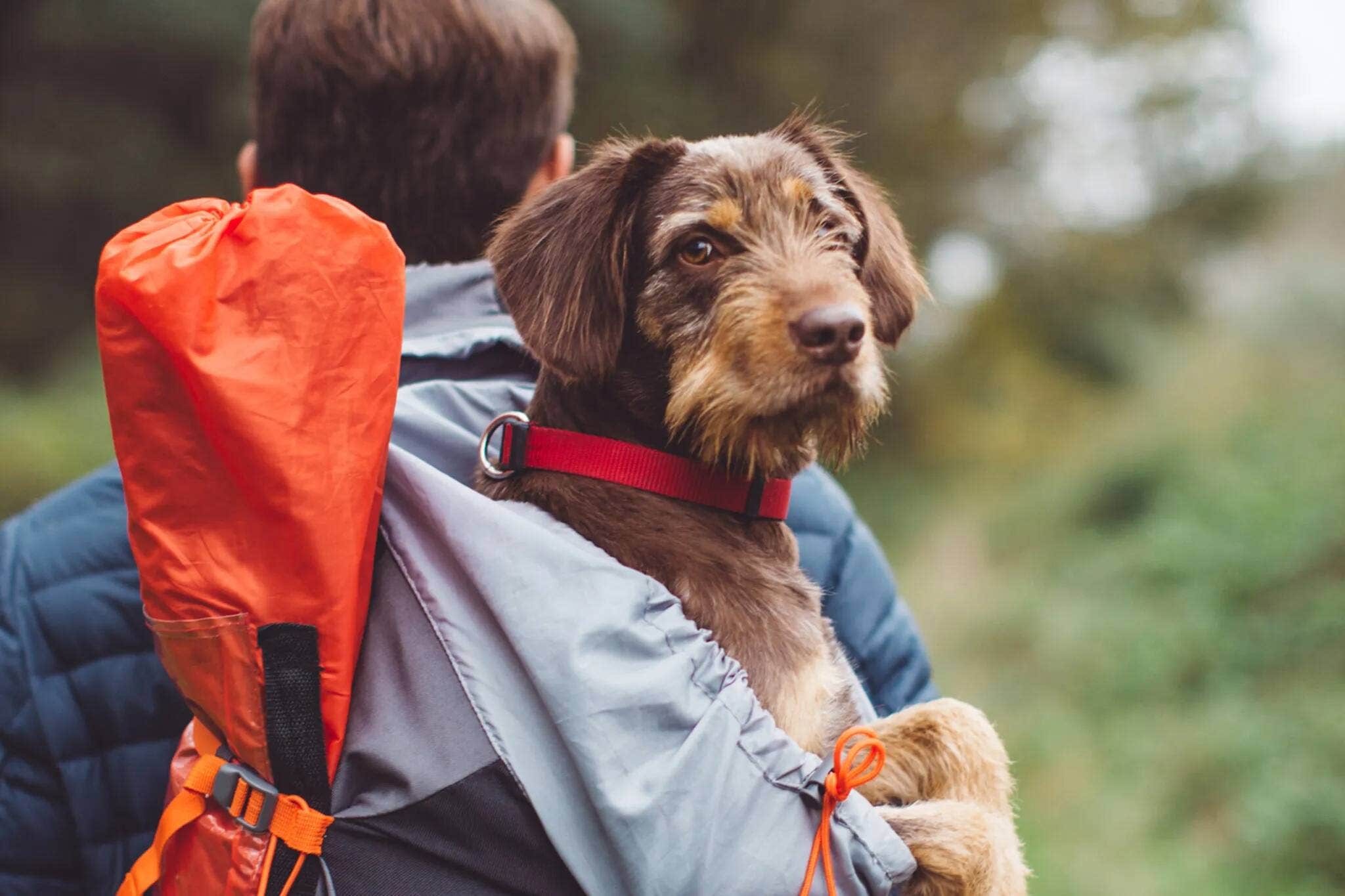
Take dog for a short walk to calm them down and burn off extra energy. Take a few minutes to pet the dog to make sure he is not overly stressed or scared.
Brushing Regularly to Remove Tangles or Matting
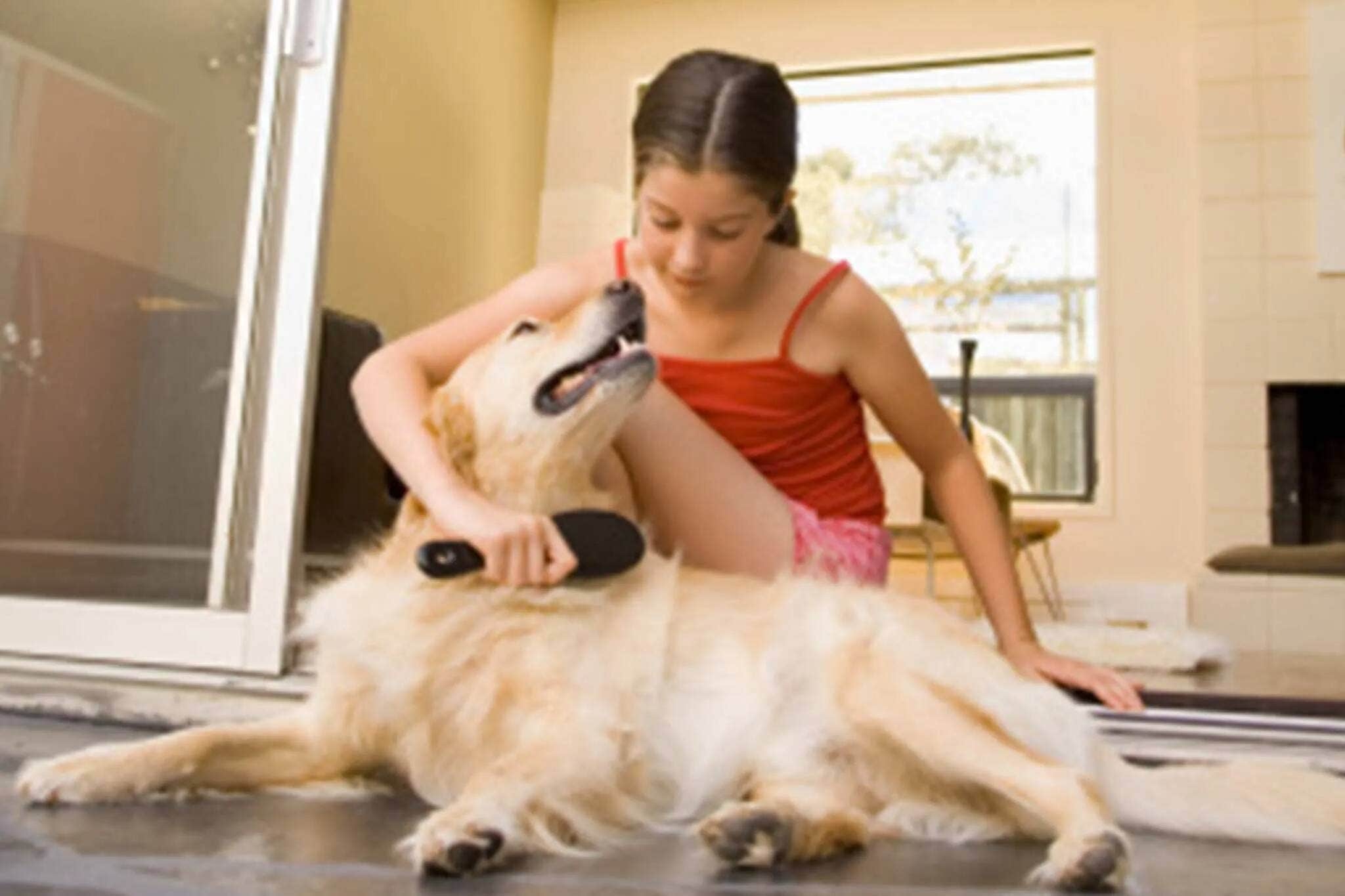
Thoroughly brush and/or comb to remove tangles and mats.
Make Sure to Thoroughly Brush Your Dog's Coat
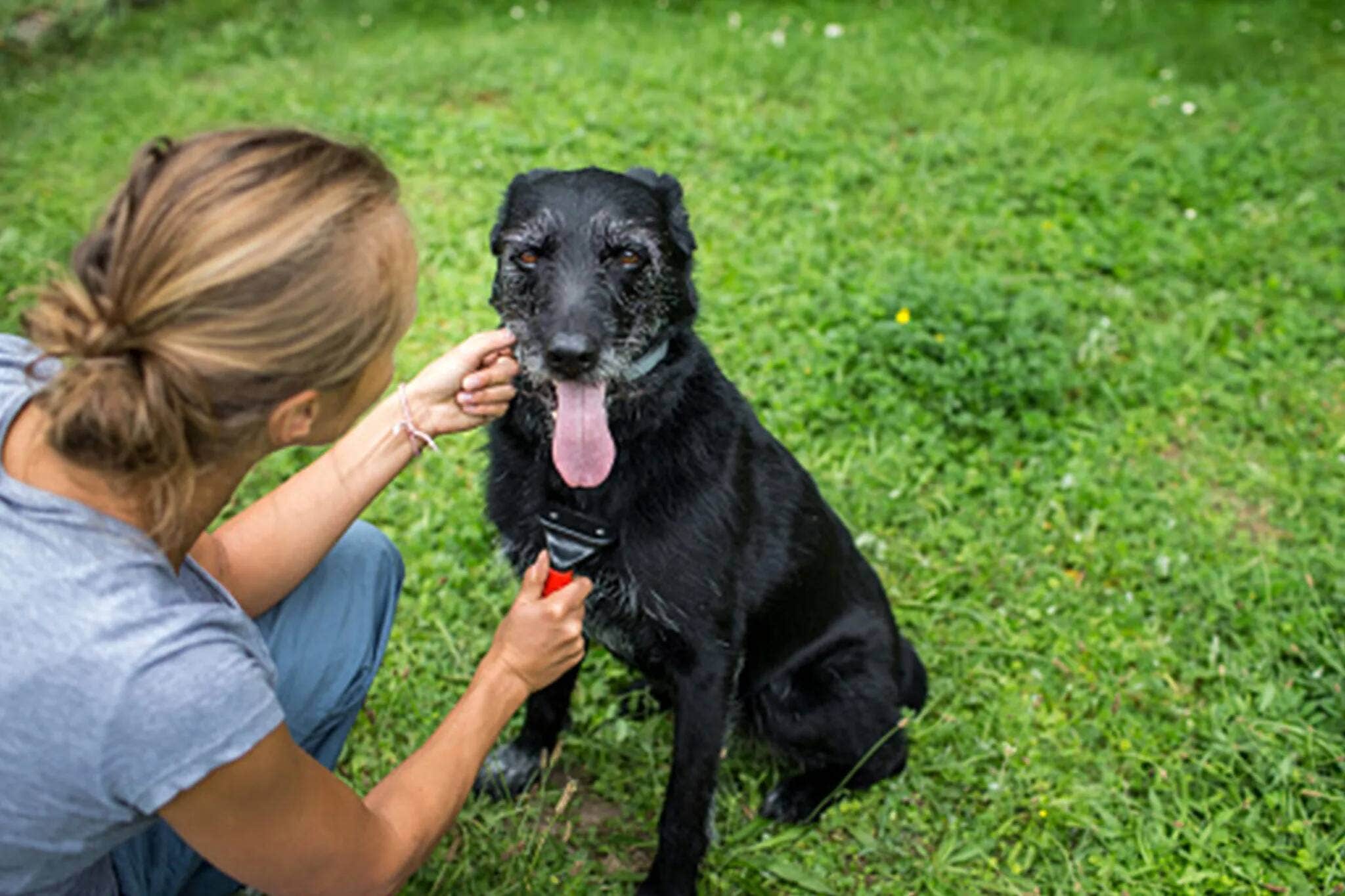
Clip as close to the body as desired, leaving at least a half-inch or more in order to maintain enough protection from the elements.
Related Videos


 India (English)
India (English)
 Middle East and Africa (English)
Middle East and Africa (English)
 South Africa (English)
South Africa (English)
 Australia (English)
Australia (English)
 Japan (日本語)
Japan (日本語)
 South East Asia (English)
South East Asia (English)
 Singapore (English)
Singapore (English)
 Europe (English)
Europe (English)
 France (French)
France (French)
 Germany (German)
Germany (German)
 Hungary (Hungarian)
Hungary (Hungarian)
 Italy (Italian)
Italy (Italian)
 Poland (Polish)
Poland (Polish)
 Portugal (Portuguese)
Portugal (Portuguese)
 Russia (Russian)
Russia (Russian)
 Spain (Español)
Spain (Español)
 The Netherlands (Dutch)
The Netherlands (Dutch)
 Turkey (Turkish)
Turkey (Turkish)
 United Kingdom (English)
United Kingdom (English)
 Argentina (Español)
Argentina (Español)
 Brazil (Portuguese)
Brazil (Portuguese)
 Colombia (Español)
Colombia (Español)
 Latin America (Español)
Latin America (Español)
 México (Español)
México (Español)
 Chile (Español)
Chile (Español)
 Peru (Español)
Peru (Español)
 Canada (English)
Canada (English)




